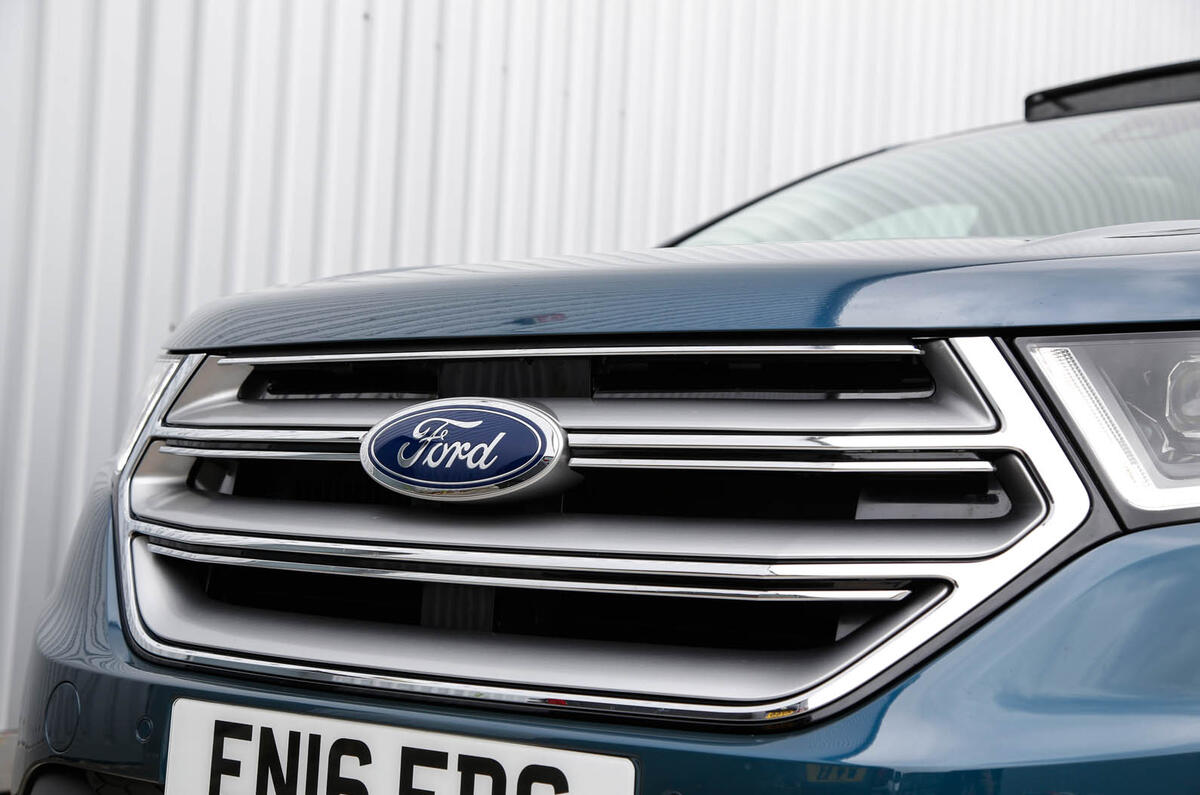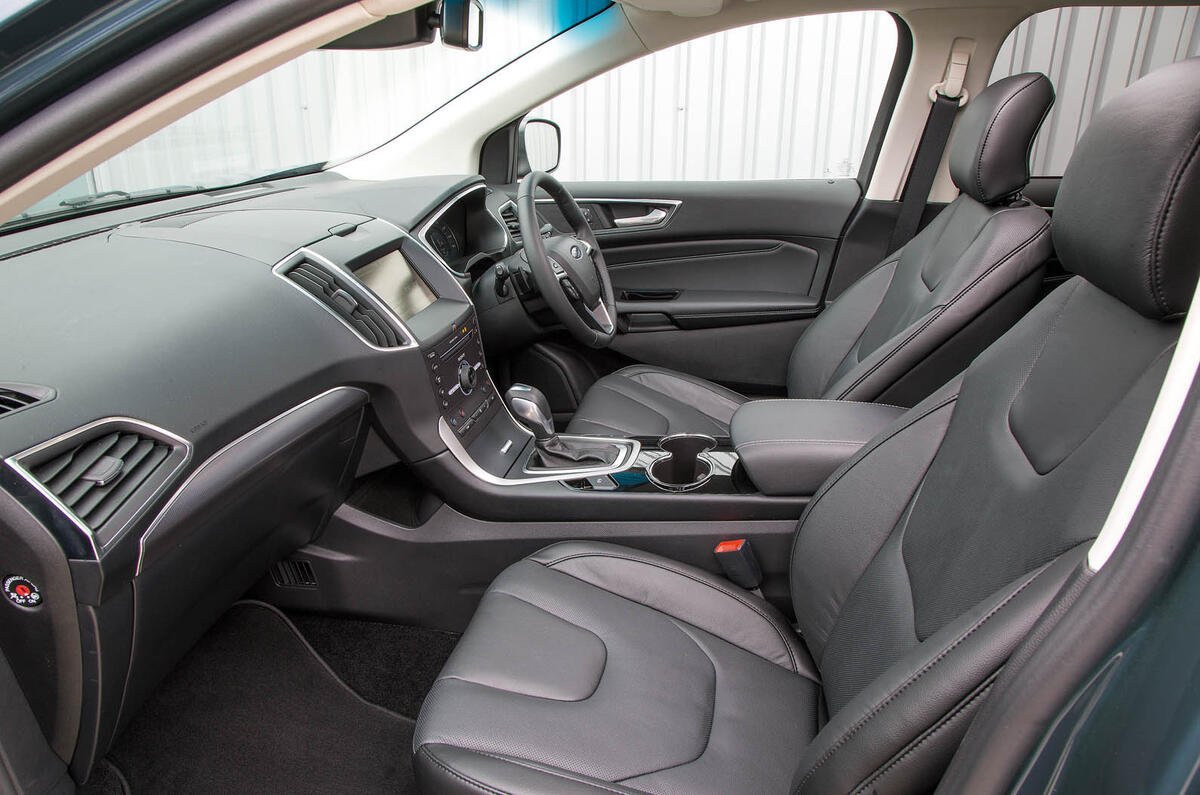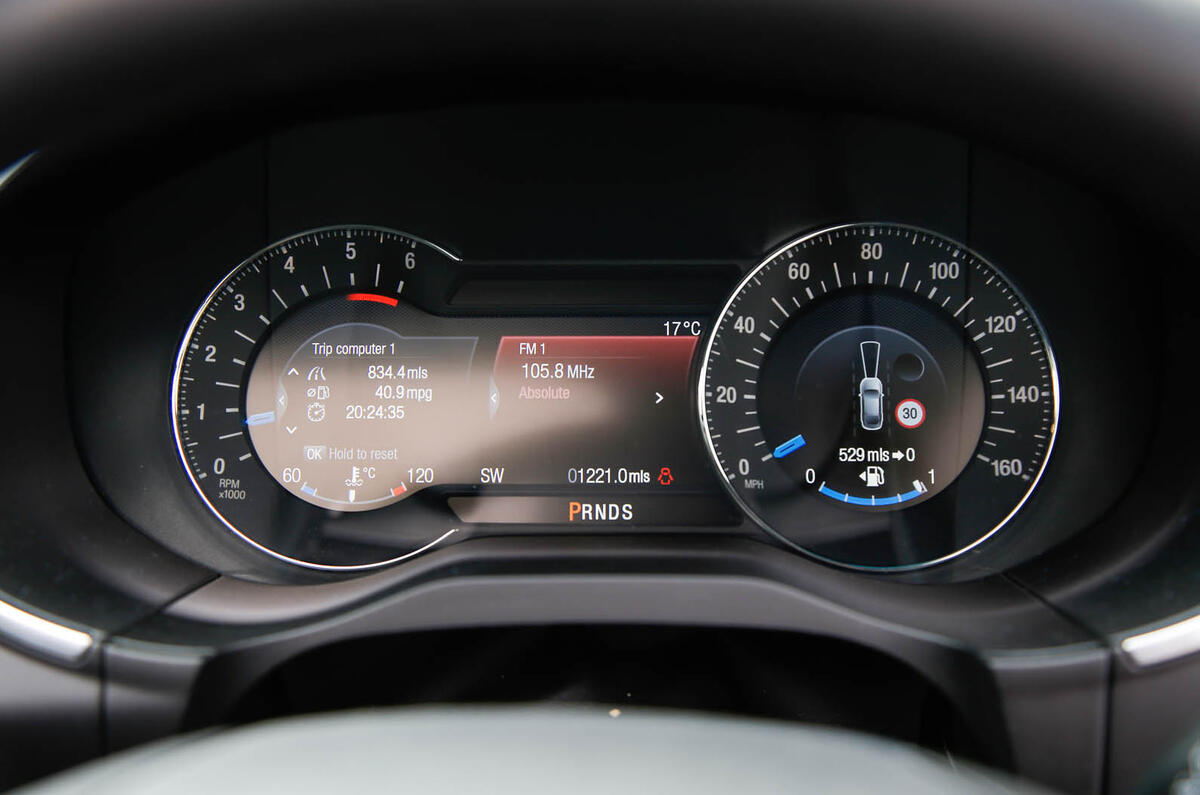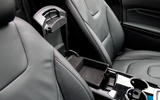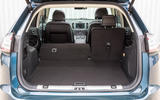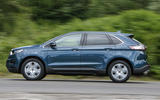The Edge was always likely to come unstuck here.
Big SUVs now rely on much more than interior roominess, a lofty ride height and a bit of leather to deliver their distinctive sense of comfort and luxury, and Ford’s recent record on perceived cabin quality – compared even with the likes of Volkswagen and Nissan, never mind BMW, Audi and Mercedes – hasn’t been great.
True to expectations, the Edge’s cabin isn’t one that’ll instantly make you feel good about forgoing ownership of a premium-branded German SUV.
It’s the spectre of exactly these comparisons that must have discouraged Ford from putting up cars at a premium price point so often over the past 20 years, but they’re nonetheless justified.
The Edge’s centre console plastics look plain, grey and ordinary. Its dashboard mouldings are mostly soft-touch, its fixtures and fittings solid-feeling and its leathers reasonably tactile and well stitched. But the material richness and attention to detail you get in an Audi Q5 or Mercedes-Benz GLC are notable by their absence.
Every chrome trim – from gear selector surround to door card to starter button – is a slightly different shade of silver from the last, while the seats look more comfortable than they are and the Sync 3 infotainment system is short of the required standards of usability and responsiveness that sets the best in the class apart - think BMW's iDrive, Audi's MMI or Mercedes-Benz's Comand infotainment systems. However, we hasten to add that it's a vast improvement on Sync 2 in terms of layout, responsiveness and usability.
The Edge’s multimedia offering starts at a slightly basic level but doesn’t stay that way as you progress upwards through the range.
All models get a Sync 3 colour touchscreen display which, in the Titanium model’s case, is fitted with a nine-speaker sound system, sat nav and DAB radio. Having downloaded Ford AppLink to your smartphone, the system allows you to access the likes of Spotify through the head unit — but it’s nowhere near being a proper mirroring system.
ST-Line and Vignale-spec cars upgrade the infotainment system with fitted SD card-based satellite navigation and a Sony audio system— which we found to be rather unresponsive when programming and slightly flaky and short on detail with its mapping. Same story as with the Ford S-Max, Ford Mondeo and Ford Focus, then.
Our test car, which had the Sony system fitted as a £450 option, produced strong, rounded audio quality and streamed music over a Bluetooth link very reliably while making tracks easy both to browse and select.
As for trim levels, there are three to choose from - Titatnium, ST-Line and Vignale. The entry-level trim equips the Edge with 19in alloy wheels, automatic headlights and rear lights, a rear spoiler, electrically folding wing mirrors, parking sensors, chrome roof rails and acoustic side glass as standard. Inside there is dual-zone climate control, heated front sports seats, tinted rear windows, a reversing camera, a powered tailsgate and numerous safety tech - including traffic sign recognition, lane departure warning and autonomous emergency braking.
ST-Line trimmed cars gain 20in alloy wheels, a sporty bodykit, sports suspension, black roof rails, electrically adjustable front seats, a Sony audio system and a man-made suede upholstery. Topping the range is the Vignale model, which has been designed to take Ford's models level of equipment, workmanship and exclusivity closer to what buyers would expect of premium brands. As a result Ford has teamed the Edge up with 20in polished alloys, adaptive LED headlights, ambient interior lighting and a premium leather upholstery.
The car is far from an abject failure as an SUV. It’s convenient; an only semi-high-rise hip point makes it particularly easy to slide in and out and its ‘wraparound’ doors cover the recessed sills and prevent your legs from picking up dirt as you climb in.
It’s practical, too; the cupholders are large and deep, as are the door pockets, while the centre armrest cubby is deep enough to hold smaller bags and tablets. There’s even a three-pin power outlet in the rear cabin.
And, yes, it’s spacious, with more rear leg room than a Hyundai Santa Fe, Range Rover Sport or Lexus RX, according to our tape measure.
Head room would have been equally generous if not for the panoramic roof of our test car, while boot space is well up to large SUV standards.





